Loren Rhoads's Blog, page 13
August 9, 2021
This Morbid Life is coming soon!
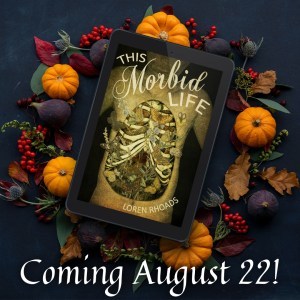 We’re two weeks away from the release of This Morbid Life, my death-positive memoir celebrating life, death, and all the lovely morbid things in-between. The ebook is now available for pre-order on Amazon.
We’re two weeks away from the release of This Morbid Life, my death-positive memoir celebrating life, death, and all the lovely morbid things in-between. The ebook is now available for pre-order on Amazon.
You can pre-order the paperbacks (signed if you like) from my bookshop.
Other venues will follow soon, including Bookshop.org, IndieBound, Smashwords, and Borderlands Books.
In the meantime, you can enter to win a copy of the Kindle edition on Goodreads. You need a Goodreads account to enter and you’ll be asked to add the book to your To-Read Shelf. Check it out here:
.goodreadsGiveawayWidget { color: #555; font-family: georgia, serif; font-weight: normal; text-align: left; font-size: 14px;<br /> font-style: normal; background: white; }<br /> .goodreadsGiveawayWidget p { margin: 0 0 .5em !important; padding: 0; }<br /> .goodreadsGiveawayWidgetEnterLink {<br /> display: inline-block;<br /> color: #181818;<br /> background-color: #F6F6EE;<br /> border: 1px solid #9D8A78;<br /> border-radius: 3px;<br /> font-family: "Helvetica Neue", Helvetica, Arial, sans-serif;<br /> font-weight: bold;<br /> text-decoration: none;<br /> outline: none;<br /> font-size: 13px;<br /> padding: 8px 12px;<br /> }<br /> .goodreadsGiveawayWidgetEnterLink:hover {<br /> color: #181818;<br /> background-color: #F7F2ED;<br /> border: 1px solid #AFAFAF;<br /> text-decoration: none;<br /> }<br /> Goodreads Book Giveaway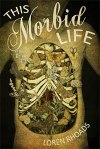 This Morbid Lifeby Loren Rhoads
This Morbid Lifeby Loren RhoadsGiveaway ends August 22, 2021.
See the giveaway details
at Goodreads.
August 2, 2021
The Cover of This Morbid Life
I met Lynne Hansen at one of the World Horror Conventions so long ago now that I can’t tell you which one. I got to know her at the World Horror in Atlanta, when we spent one evening talking about being women in the horror field, our hopes and dreams and future projects. It was one of the most inspiring conversations of my life.
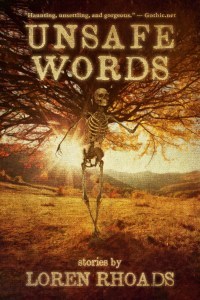 Somewhere along the way, Lynne started to design book covers. Last year, when I decided to put together a short story collection, I paged through Lynne’s available covers. There were some things I really loved, but noting was quite right. For the first time in my life, I commissioned a book cover — and I was thrilled by what she designed for me.
Somewhere along the way, Lynne started to design book covers. Last year, when I decided to put together a short story collection, I paged through Lynne’s available covers. There were some things I really loved, but noting was quite right. For the first time in my life, I commissioned a book cover — and I was thrilled by what she designed for me.
In addition to all her commissioned covers, Lynne also designs a monthly calendar which she gives away to her newsletter subscribers. Those images are available to be turned into book covers. You can subscribe to her newsletter here and check them out for yourself: https://view.flodesk.com/pages/5efe1de66d32be002643c1b5
Last October, Lynne also (because clearly this woman needs to keep busy!) challenged herself to make a book cover a day. All of them were for sale at a discount off her regular rates, first come, first serve.
One day, she put up a mock cover that I just had to have. My hands were shaking as I sent her an email, hoping no one else had beaten me to it. I’ve never sent a payment so quickly in my life.
Then I had to come up with a book worthy of the book cover. I’ve been working on it all year. It’s a collection of confessional essays I’ve written for zines, including Morbid Curiosity magazine, online magazines from Gothic.Net to Scoutie Girl, print magazines like Unzipped, and the Sex Toy Tales book.
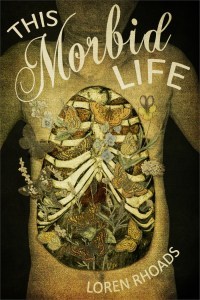
The 45 essays range from taking prom pictures in a cemetery to spending a couple of days in a cadaver lab, from nursing a friend who was dying of AIDS to raising a kid who isn’t afraid of anything. I am so excited to unleash this book on the world — and I am so grateful to Lynne for inspiring me to pull the book together.
This Morbid Life comes out August 22. It will be available from Amazon, Barnes & Noble, Indie Bound, Bookstore.org, and Smashwords. You’ll be able to get it in paperback and the ebook format of your choice. I’ll post the links as soon as I have them.
“Witty, touching, beautifully written, and haunting — in every sense of the word — This Morbid Life is an absolute must-read for anyone looking for an unusually bright and revealing journey into the darkest of corners. Highly recommended!” — M.Christian, author of Welcome To Weirdsville
July 26, 2021
The Spooky Writer’s Planner in Use
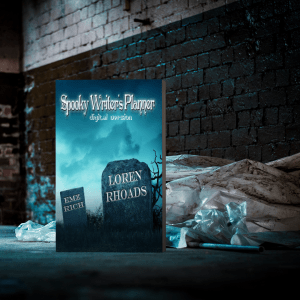 Last year, I decided it was time to finally make myself a planner that encompassed all the calendar pages, charts, and spreadsheets that I needed to keep charging forward as an author. I approached my friend, horror author Emerian Rich, who is also a talented graphics designer. My intention was to hire her to make me the perfect planner.
Last year, I decided it was time to finally make myself a planner that encompassed all the calendar pages, charts, and spreadsheets that I needed to keep charging forward as an author. I approached my friend, horror author Emerian Rich, who is also a talented graphics designer. My intention was to hire her to make me the perfect planner.
As it turned out, Emerian was also hunting for the perfect planner. Figuring that there were a lot of other authors in the same position, she suggested that we make a planner to sell. The Spooky Writer’s Planner was born!
I’ve been using the planner for almost 8 months. The thing that’s been most useful about it came as a surprise to me. I am always working on several projects at once: the new book I’m putting together, a book or two that I am planning for the future, photo organization projects, preparing for podcasts, writing articles, juggling social media updates…and the planner helped me to keep it all straight!
In the past, it’s always been a struggle to figure out where I was when I needed to circle back to a project that had been set aside. Now I can just go look at my planner. Did I finish the edits? When was the last time I checked in with my assistant? Have I scheduled next month’s Instagram posts? When does my blog registration come up for renewal? When should I send my next newsletter out? Did I remember to post the new book on the HWA site? All that information is easily findable now.
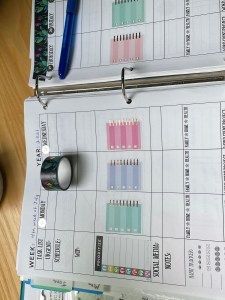 I sit down every Sunday morning while my family is sleeping in to play in my planner. I start by looking up the coming week’s schedule: when do I have writing dates, are there any classes I’ve signed up for, is anyone I know giving a reading? I mark those down first.
I sit down every Sunday morning while my family is sleeping in to play in my planner. I start by looking up the coming week’s schedule: when do I have writing dates, are there any classes I’ve signed up for, is anyone I know giving a reading? I mark those down first.
Then comes the fun part. I go wild with stickers and washi tape, bringing the blank pages to life.
As I do that, I think about what needs to happen in the coming week. Which project is hot right now? What deadlines arecoming up? How can I move everything forward? This is probably the most crucial part for me. In the past, I kept a master to-do list that ran for pages and pages. Since nothing was prioritized, I’d do what was easy or looked like fun — and then feel guilty because I wasn’t accomplishing the bigger projects.
This year, I have finally crossed some of those big projects off my list. It’s felt amazing.
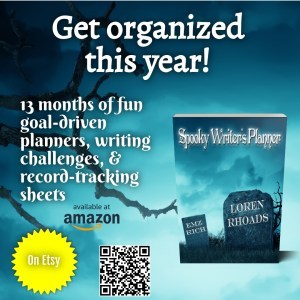
I’m not saying that THIS planner is the one that will change your life, but it may be the one that helps you figure out where best to focus your energy. It’s available both as a bound and printed book from Amazon or as a digital download from Etsy, which is the version I use. I like being able to print as many pages as I need, especially duplicates of the submission charts and guest post trackers.
Choose the version that works best for you.
And if you’re one of the people who has already gotten a copy of the planner, what did you like about it? What do you wish it had that it doesn’t? Emerian and I are wondering whether we should do an updated version for 2021. We’d love to have your input.
July 19, 2021
My Name Is
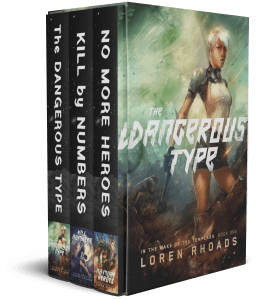 My mother was a librarian, so I grew up surrounded by books. I used to like to accompany her to each new library to which she was assigned. Once she showed me where the science fiction shelf was, I’d sit down and work my way through it.
My mother was a librarian, so I grew up surrounded by books. I used to like to accompany her to each new library to which she was assigned. Once she showed me where the science fiction shelf was, I’d sit down and work my way through it.
It didn’t take long for me to notice all the writers (in those misty, far off days) were men. Even the few women wrote under male names: Andre Norton, C.J. Cherryh, James Tiptree Jr., and the ambiguously gendered (to me) Leigh Brackett and Marion Zimmer Bradley.
The message I took from this was that women were welcome in small numbers, as long as they passed socially as men. It was a message I had already internalized. I never felt like my given name fit me. From an early age, I called myself George – long before I knew that was the nickname of Nancy Drew’s female friend.
I could dress up with the other girls, put on lipstick and curl my hair, but it always felt like a costume, a show of femininity. I never felt male, really. I just never felt traditionally female, either.
I chose my new name before I applied to Clarion. Loren summed me up. It was a masculine form of a name when written, but when heard, the gender was ambiguous. People could guess which gender fit, according to their preferences, but when they met me, they needed to reconcile the gender of the name with the obvious gender of my body.
I understood that science fiction was, at that time, written about men. So I wrote about the men I knew, my gay friends from high school.
The story that got me into Clarion was about a transgender prostitute named Tolly. Thomas Disch, one of my Clarion instructors, was extremely disappointed when he met me and my gender didn’t match his expectations, based on the spelling of my name and the subject of my story. The same story, when written by a woman, meant something completely different to him.
I read that story for Wily Writers last month, if you want to check it out: https://lorenrhoads.com/2021/06/23/with-you-by-my-side-it-should-be-fine/
Thirty years after Clarion, when my space opera trilogy sold to Night Shade Books, I had to look at the gendered name problem from another direction. My publishers asked if I would consider using a more feminine pen name. It could be an open secret, like Seanan McGuire/Mira Grant. They just wanted readers to be able to look at the front of the book and know it was written by a woman.
I got out of that by pointing out I would need to begin my social media connections from scratch under the new name.
It made me wonder, though: how much are we still influenced – as book shoppers – by the unfamiliar name on a book cover? Does gender trump cover art or blurb or back cover description?
***
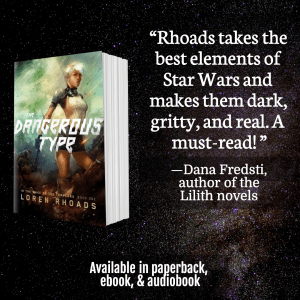 My novel The Dangerous Type was first of a trilogy called In the Wake of the Templars. All three books were published by Night Shade Books in 2015. Here’s the description of the first one:
My novel The Dangerous Type was first of a trilogy called In the Wake of the Templars. All three books were published by Night Shade Books in 2015. Here’s the description of the first one:
Enslaved, trained as a killer, betrayed, entombed, and abandoned: you can see why Raena Zacari might have a chip on her shoulder. In the grimdark universe of Rhoads’s propulsive, action-heavy debut, the universe’s deadliest assassin sets off on a mission of vengeance into a galaxy destabilized by genocidal warfare. Her target, the despotic warlord Thallian, is on the run for war crimes but determined to reclaim what he believes is his by right. The stage is set for a revenge tale constructed from a web of complex, strained relationships made messier by two decades of forced separation.
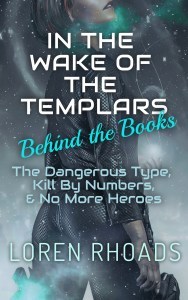 I put together a whole booklet of behind-the-scenes essays about the Templar books and their influences — along with the first chapter of The Dangerous Type, a prequel story about Raena and Ariel, and a whole lot of other juicy stuff — which you can download for free at Bookfunnel. Here’s the link: https://dl.bookfunnel.com/wuagew2m0f
I put together a whole booklet of behind-the-scenes essays about the Templar books and their influences — along with the first chapter of The Dangerous Type, a prequel story about Raena and Ariel, and a whole lot of other juicy stuff — which you can download for free at Bookfunnel. Here’s the link: https://dl.bookfunnel.com/wuagew2m0f
The novels are available at Amazon, Bookshop.org, Barnes & Noble, or directly from me: https://lorenrhoads.com/product-category/space-opera/
July 12, 2021
Surviving the Templar Tombs
 In my space opera trilogy, the Templars were an old species, maybe the first to achieve interstellar travel. When humanity’s empire butted up against Templar space, war erupted. Humanity unleashed a genetic plague that wiped the Templars out.
In my space opera trilogy, the Templars were an old species, maybe the first to achieve interstellar travel. When humanity’s empire butted up against Templar space, war erupted. Humanity unleashed a genetic plague that wiped the Templars out.
The trilogy opens on the Templar tombworld, a ghost planet full of mountains that were hollowed out and used as graves by the insectile Templars. Back when the Templars still existed, they protected the planet and didn’t allow outsiders to land there.
In the decades since the Templars perished, their tombs have lain undisturbed: a monument to the former rulers of the galaxy. When The Dangerous Type begins, a team of humans has bribed all the local authorities to turn a blind eye as they loot the graves.
I envision the Templar tombs as huge inside, full of space and just as black. Their stone walls have a strange ability to generate a field that keeps things stored inside as fresh and shiny as the day they were buried. Mostly, that means that Templar warriors are still contorted by the plague that killed them, their blood still fresh.
In the case of Raena Zacari, entombed alive during the Human/Templar War, the stone preserved her, despite 20 years without food or water or air. Some readers have interpreted that as stasis, which implies a “slowing or stoppage of normal flow of bodily fluid,” according to Merriam-Webster.
I see Raena’s confinement more as a bend in time. She can get up, walk around, explore the extent of her grave. For a while, she had a lantern left behind by her jailers, but eventually its batteries ran down. After she shredded her cloak and it failed to repair itself, she believed that any injury she did to herself—intentionally or not—would not heal. She was more afraid of living forever with a concussion or a broken bone than she wanted to die, so she endured her imprisonment, entertaining herself with memories, slowly becoming sane, and waiting to be released.
After she gets out, of course, there’s hell to pay. She goes on a mission to hunt down the commander who watched her burial alive—and never came to rescue her after the War ended. From then on, the story is off and running.
As a matter of fact, Raena’s entombment actually dates back to the very first story I published about her: “Claustrophobia,” which appeared in the zine Anthology in 1986. I’ve written about my own claustrophobia, but there was an equally important reason for Raena’s imprisonment: since my friends and I created a shared universe zine, we were writing for each other’s characters. One of the others wrote about Raena as heartless and evil. I didn’t recognize her. Horrified, I made it so that she couldn’t appear as a villain in anyone else’s story. I locked her up alive in the Templar tomb to keep her character safe from misuse.
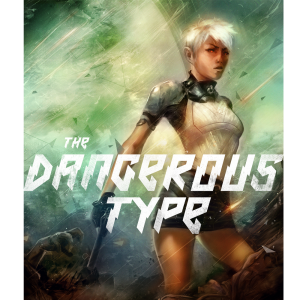 Storywise, locking her up was really a good choice. It meant that, going forward, Raena appeared as a specter or motivation in a lot of the other characters’ stories. Only after the zine ceased publication did I toy with the idea of letting her out—and that’s where this trilogy came from.
Storywise, locking her up was really a good choice. It meant that, going forward, Raena appeared as a specter or motivation in a lot of the other characters’ stories. Only after the zine ceased publication did I toy with the idea of letting her out—and that’s where this trilogy came from.
So why doesn’t Raena age while she’s imprisoned? I wanted the other characters in The Dangerous Type to react to post-imprisonment Raena as if she is still the violent, unpredictable, frightened girl she was when they knew her during the War. Those preconceptions are easier to sustain because she looks like the same girl. But just as the others have aged and changed, so has she. It’s just not visible on Raena’s surface. I’ve written about my experiments with persona, but Raena’s youthful appearance was crucial to that exploration.
All novels combine a whole lot of different influences, but those are the elements that kicked off my In the Shadow of the Templars trilogy. The Dangerous Type came out from Night Shade Books on July 7, 2015, followed by Kill By Numbers in September and No More Heroes in November that year.
 I put together a whole booklet of behind the scenes essays about the Templar books and their influences — along with the first chapter of The Dangerous Type, a prequel story about Raena and Ariel, and a whole lot of other juicy stuff — which you can download for free at Bookfunnel. Here’s the link: https://dl.bookfunnel.com/wuagew2m0f
I put together a whole booklet of behind the scenes essays about the Templar books and their influences — along with the first chapter of The Dangerous Type, a prequel story about Raena and Ariel, and a whole lot of other juicy stuff — which you can download for free at Bookfunnel. Here’s the link: https://dl.bookfunnel.com/wuagew2m0f
The novels are available at Amazon, Bookshop.org, Barnes & Noble, or directly from me: https://lorenrhoads.com/product-category/space-opera/
July 5, 2021
New Worlds Await
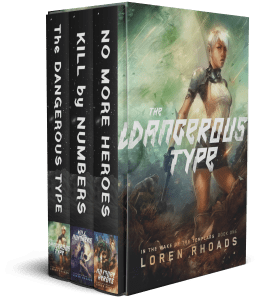 July 7 is the anniversary of the publication of my first space opera novel, The Dangerous Type. I wrote this piece about faster-than-light travel back then, but it was never published. I thought you might be interested in it.
July 7 is the anniversary of the publication of my first space opera novel, The Dangerous Type. I wrote this piece about faster-than-light travel back then, but it was never published. I thought you might be interested in it.
In our universe, interstellar travel is slow and time-consuming. It takes nine months to get an unmanned rocket to Mars and that’s only 140 million miles away. The closest planet outside our solar system is more than 25 trillion miles away. We’re not getting there any time soon.
For my space opera trilogy, I took interstellar travel as a given, something necessary for the story to take place. There are different and unfamiliar people in my galaxy, therefore there are different and unfamiliar worlds. There must be ways to travel amongst them.
My editor encouraged me to think more deeply about the modes of transportation. What interested me was not the theoretical science of bending laws of space and time to drive ships across the vastness, but the economic inequities of space travel.
One of the things I wanted to explore in my galaxy was the way wealth changes the experiences available to my characters. I’m dealing with two generations: the humans who were shaped by surviving the Human-Templar War and the multispecies crew of the Veracity, who grew up in the war’s aftermath.
In my galaxy, space travel is expensive. Either people buy personal craft at great cost or they buy passage on other people’s ships. If they’re dying to travel — or to escape wherever they’ve found themselves — they might take a job on a ship hauling food around the galaxy or catering to travelers. The sort of travel we’re familiar with now — jumping on a plane for a quick vacation — is rare. People might save their whole lives for a vacation on a pleasure planet. They might travel once in their lives, but afterward they might not be able to afford to leave.
For the most part, only the wealthy or the useful get to travel through space. Everyone else stays on the ground.
The In the Wake of the Templars series focuses on the crew of the Veracity, led by reformed Imperial assassin Raena Zacari. The Veracity is much older than most other ships in service at the time of the trilogy. It served as a diplomatic transport during the Human-Templar War and was hidden away, rather than scrapped, at the war’s end. It’s trickier to fly than newer ships and requires someone in the cockpit to monitor it constantly. Its human-made drive skips the ship across space, zipping in and out of hyperspace. At the end of each hop, the course needs to be recalibrated. Haoun, the Veracity’s Na’ash pilot, learned to fly on simulators. The rest of the Veracity’s crew is capable of monitoring its flight, but they need Haoun to run the ship’s calculations.
The Veracity’s crew makes enough money to keep their ship flying, but they wouldn’t have been able to buy it in the first place, if Raena hadn’t stolen it for them.
Personal craft do exist that can cross space more quickly and easily than the Veracity, but ships owned by individuals are small and fuel is not easy to come by. Former arms dealer Ariel Shaad has a racer that she can fly by herself, but it’s really only comfortable when she’s solo or traveling with an intimate friend. Just before the events of The Dangerous Type, she had it upgraded with a Templar-derived tesseract drive, which proves to be a problem in book 2 of the series.
Before the trilogy begins, the Templars were wiped out by a genetically targeted plague during the war with humans. Prior to the war, they provided gates that most large ships used to travel from one solar system to the next. Use of the gates was subject to tolls, collected by the Templars, who profited from – and could regulate – all galactic trade.
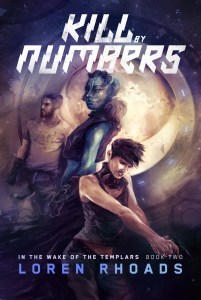 Once the Templars were gone, one of their stardrive technologies was appropriated by the rest of the galaxy. The tesseract drive, which is not as well understood as most people believed, warps space. Tesseract ships are fast, but in Kill By Numbers, the second book in the trilogy, they are starting to malfunction. Ships go into tesseract space — and sometimes, unpredictably — they don’t come out. This has been happening for a while before the Veracity’s crew gets involved, but the intragalactic shipping companies hid the evidence.
Once the Templars were gone, one of their stardrive technologies was appropriated by the rest of the galaxy. The tesseract drive, which is not as well understood as most people believed, warps space. Tesseract ships are fast, but in Kill By Numbers, the second book in the trilogy, they are starting to malfunction. Ships go into tesseract space — and sometimes, unpredictably — they don’t come out. This has been happening for a while before the Veracity’s crew gets involved, but the intragalactic shipping companies hid the evidence.
After the tesseract flaw is revealed, the galaxy is thrown into turmoil. Delivery ships have gotten too big to use the gates. Insurance to pay families of haulers lost when ships enter tesseract and don’t return is so expensive that shipping companies are driven out of business. Tech shortages and famines result. The tourist industry is gutted when people decide travel on tesseract-powered ships is unsafe. Only smaller — older — ships like the Veracity are reliable and there aren’t enough of them to keep the peace.
So where did all of this come from? I’m fascinated by the power of transportation and the slow collapse of cities because I grew up outside of Flint, Michigan as General Motors ceased manufacturing automobiles there. Michigan in the late 20th century had been designed around the automobile and trucking industries. There wasn’t a reliable public transit system any longer. The town where I grew up had neither a train nor bus station, though it had once had both. If you didn’t have a car, you walked, rode your bike without benefit of bike lanes, or you stayed put.
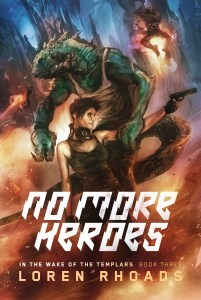 My trilogy gave me a venue to explore the ubiquity of transportation and the ways in which we take it for granted. It’s so easy to overlook, until the system breaks down and leaves you stranded.
My trilogy gave me a venue to explore the ubiquity of transportation and the ways in which we take it for granted. It’s so easy to overlook, until the system breaks down and leaves you stranded.
Of course, space travel and its deficiencies are only the underpinnings of my story. When you’re writing science fiction, it’s fun to take something as familiar as travel — or the ability to eat produce delivered from all around the world — and wonder what would happen if those constants were disrupted on a galactic scale.
Find out more about the Templars trilogy here: https://lorenrhoads.com/writing/the-dangerous-type/
June 23, 2021
With You By My Side, It Should Be Fine
 The story that got me into the Clarion Science Fiction Writers Workshop was about a nonbinary prostitute called Tolly. Thomas Disch, one of my Clarion instructors, was extremely disappointed when he met me and my gender didn’t match his expectations, based on the spelling of my name and the subject of my story. The same story, when written by someone who presented as a woman, meant something completely different to him.
The story that got me into the Clarion Science Fiction Writers Workshop was about a nonbinary prostitute called Tolly. Thomas Disch, one of my Clarion instructors, was extremely disappointed when he met me and my gender didn’t match his expectations, based on the spelling of my name and the subject of my story. The same story, when written by someone who presented as a woman, meant something completely different to him.
At the time, I didn’t have the language to describe Tolly. I saw him as a boy who was more comfortable pdressed like a girl. Once, decades later, I saw the term nonbinary, I knew that was how Tolly would describe himself.
In this story, which was originally drafted in the early 80s, I’d never heard of nonstandard pronouns. Because of that, Tolly uses masculine pronouns throughout, because that is what was available to him in the world he lived in. I like to think that wherever he and Doug end up, there are wider options available. Masculine pronouns have never encompassed all that Tolly is.
WilyWriters.net invited me to kick off their new reading series. Since it’s Pride Month, I asked if I could read the LGBTQ+ story closest to my heart, the one I chose to end my story collection, Unsafe Words.
This is “With You By My Side, It Should Be Fine.”
June 5, 2021
Paranormal Romance eBook Extravaganza!
(2) Winners of eBook “Gift Baskets” of ALL ebooks
Other Winners of individual ebooks or paperbacks (randomly selected)
May 31, 2021
Holding Office Hours at the Nebulas

This Friday at 11 a.m., I’m hosting an Office Hour as part of the Nebula Conference of the Science Fiction Writers Association. I’ll be available to answer questions about the future of body disposal from burial in space to cremation to the newest technologies for water cremation, promession (freeze-drying), and human composting.
I’ve been researching memorial gifts like cremation diamonds, tattoo preservation, and memorial forests.
If you’re going to the Nebula Conference, I’d love to talk with you. The signup sheet is here: https://events.sfwa.org/schedule/office-hours/
If you’re not attending the Nebulas, I’ve been collecting my reference materials up on Pinterest: https://www.pinterest.com/MorbidLoren/future-of-death/
May 3, 2021
Tales for the Camp Fire
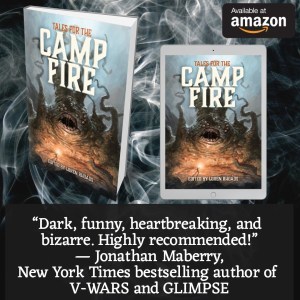 Two years ago, I edited a collection of horror stories to raise money for survivors of the Camp Fire in Northern California. It was one of the honors of my life to edit the book, which has gone on to raise more than $2500 for the North Valley Community Foundation.
Two years ago, I edited a collection of horror stories to raise money for survivors of the Camp Fire in Northern California. It was one of the honors of my life to edit the book, which has gone on to raise more than $2500 for the North Valley Community Foundation.
All of the stories were donated by their authors, including a story donated by the estate of Clark Ashton Smith. The cover artwork was donated. I donated my time as an editor. The publisher has donated all the profits from the book.
While the survivors of the Camp Fire have now rebuilt or moved away, the number of people who have survived a wildfire in California grows each year. The state received very little rain this past winter — and consequently this upcoming fire season has been forecasted to be the longest and most devastating yet.
Want to help out? You’re in luck! The book is still available for sale in paperback and ebook at Amazon: https://amzn.to/3vKyoSZ (Be aware that if you buy it from one of the “other sellers,” no donation can be made.)
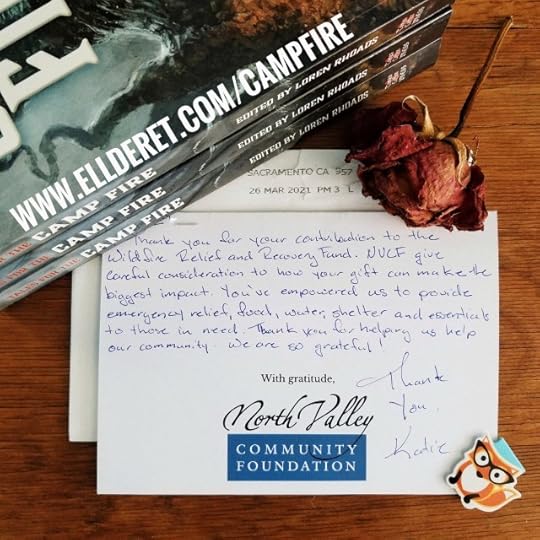
In the meantime, here’s a taste of my introduction to the book:
In the Face of the FireMy father was five when his home burned to the ground. My grandparents had been sitting up in the evening when a chicken incubator caught fire on the porch. As flames licked up the outside of the house, they rounded up their three kids—my dad was the oldest—and fled into the cold Michigan night. Somehow, in the process of doing what they could to fight the fire, my grandparents lost track of my dad. He wandered back into the burning house and went back to bed. He was too young, too sleepy, to understand the danger. My grandfather braved the flames to rescue him. He was burned coming back down the stairs, but thankfully, they both survived.
Not only did the family lose everything beyond the clothes on their backs, but Grandpa didn’t trust banks. He’d had a thousand dollars in cash hidden in the house. In an instant, everything they’d owned and all of their savings were gone.
I’m not the only author in this collection whose life was shaped by fire. Gene O’Neill’s family lost a house in one of California’s wildfires. Gary Clark wrote in his submission letter, “A woman who lost her home has just moved into the mobile home park here where I live.” Images of families huddled into shelters filled the local news for weeks.
All of us in this book remember the terrible smoke from the Camp Fire. Not only could the fire be seen from space, but smoke blanketed the Bay Area from Napa in the north to San Jose in the south. Because of the unusually still weather last November, smoke poured through the passes surrounding the San Francisco Bay and got trapped by the coastal mountains. Even though San Francisco itself is almost 200 miles from Butte County, for almost a week we had the worst air quality in the world.
Even while it wasn’t safe to breathe the outside air, our hearts went out to the people of Butte County—those who were evacuated from the fire zone and waited in shelters to hear if their homes survived, those who lost everything including loved ones and pets, and those who could not outrun a fire that traveled ten miles in ten minutes, devouring everything in its path before people could even begin to grasp the danger they were in.
In the weeks after the fire, the San Francisco Bay Area Chapter of the Horror Writers Association decided to assemble this volume as a way to raise money to support the survivors of the Camp Fire. The initial idea was put forth by Ben Monroe. I volunteered to edit and E.M. Markoff stepped forward to act as publisher. Ken Hueler helped me get the word out to the members. Submissions flooded in.
Horror is the perfect genre to grapple with questions raised by disasters of this magnitude. What, in the end, is truly important in life? How can we face death? How does one continue when confronted with unimaginable loss? Is it possible to find light in the darkness? Can humor save us? One hopes that catharsis will cause us to value our common humanity all the more.
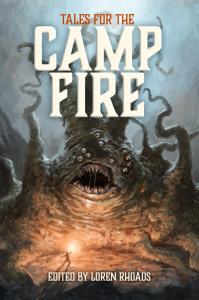 I am immensely honored to present this collection of short horror stories to you. Many of these tales were published previously, but others appear here for the first time. You’ll find everything from straight-up horror to science fiction to fairytales, stories to frighten, awe, and cheer you.
I am immensely honored to present this collection of short horror stories to you. Many of these tales were published previously, but others appear here for the first time. You’ll find everything from straight-up horror to science fiction to fairytales, stories to frighten, awe, and cheer you.
Thank you in advance for your generosity.
That link again is: https://amzn.to/3vKyoSZ




